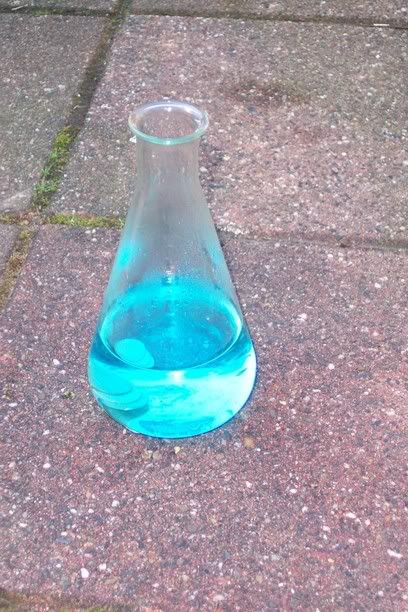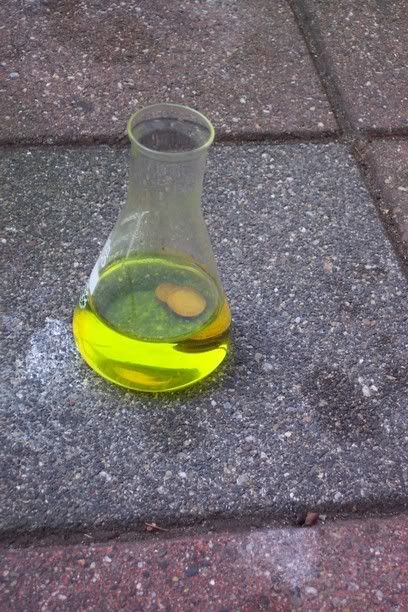| Dissolved the inside with HCl, and the outside with a combination of potassium cyanide and potassium persulfate. The cyanide strongly complexes
copper, reducing its redox potential to just below that of zinc, and the persulfate oxidizes it. My friend Tryggvi worked this out, and it's quite
delicate. You have to keep the solution cold otherwise the persulfate starts attacking the zinc too. |



